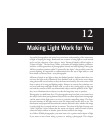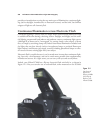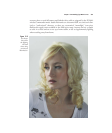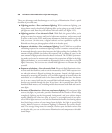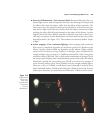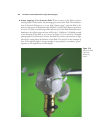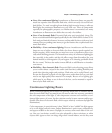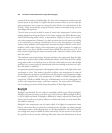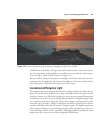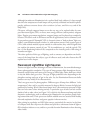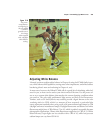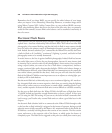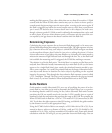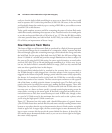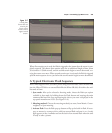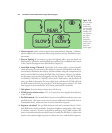
5,500K for most of the day. Starting an hour before dusk and for an hour after sunrise,
the warm appearance of the sunlight is even visible to our eyes when the color temper-
ature may dip to 5,000-4,500K, as shown in Figure 12.5.
Because you’ll be taking so many photos in daylight, you’ll want to learn how to use or
compensate for the brightness and contrast of sunlight, as well as how to deal with its
color temperature. I’ll provide some hints later in this chapter.
Incandescent/Tungsten Light
The term incandescent or tungsten illumination is usually applied to the direct descen-
dents of Thomas Edison’s original electric lamp. Such lights consist of a glass bulb that
contains a vacuum, or is filled with a halogen gas, and contains a tungsten filament that
is heated by an electrical current, producing photons and heat. Tungsten-halogen lamps
are a variation on the basic light bulb, using a more rugged (and longer-lasting) fila-
ment that can be heated to a higher temperature, housed in a thicker glass or quartz
envelope, and filled with iodine or bromine (“halogen”) gases. The higher temperature
allows tungsten-halogen (or quartz-halogen/quartz-iodine, depending on their con-
struction) lamps to burn “hotter” and whiter. Although popular for automobile head-
lamps today, they’ve also been used for photographic illumination.
Chapter 12 ■ Making Light Work for You 403
Figure 12.5 At dawn and dusk, the color temperature of daylight may dip as low as 4,500K.



